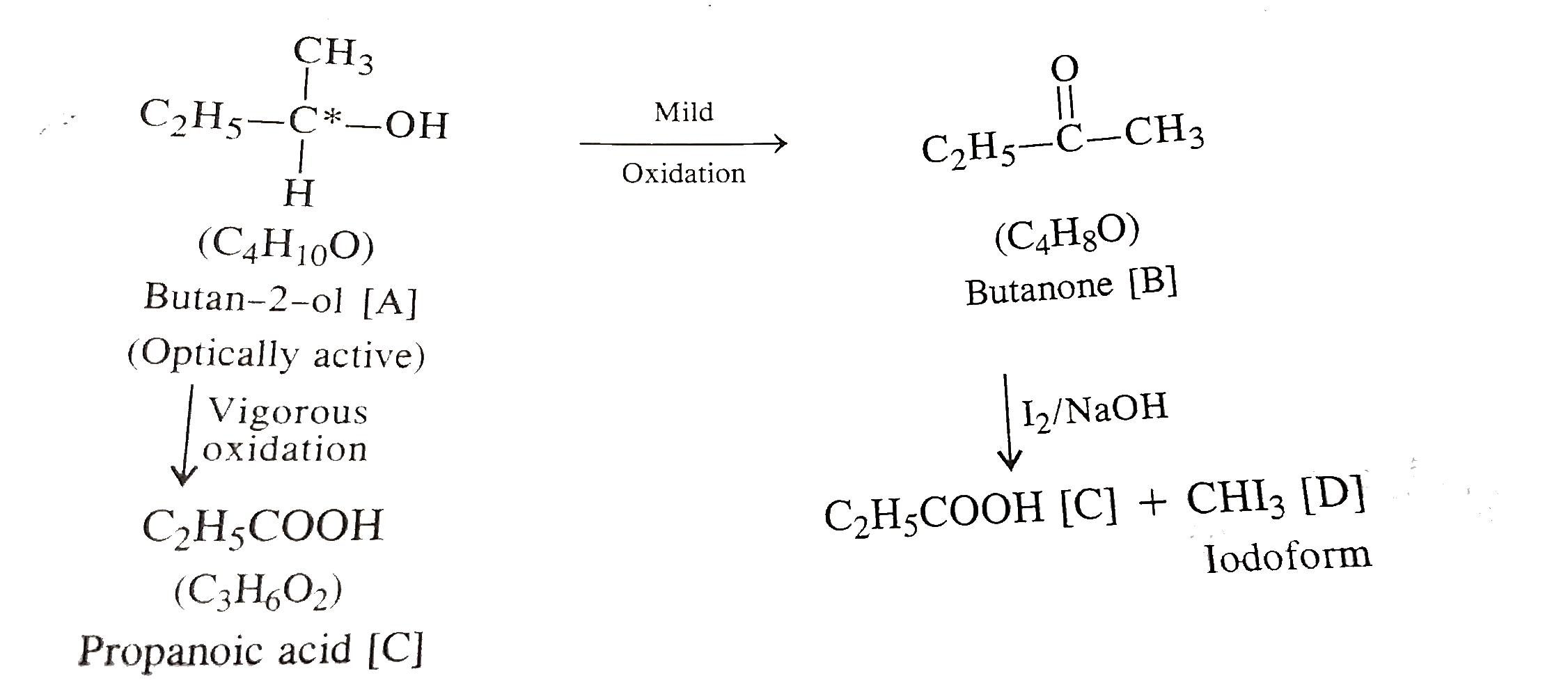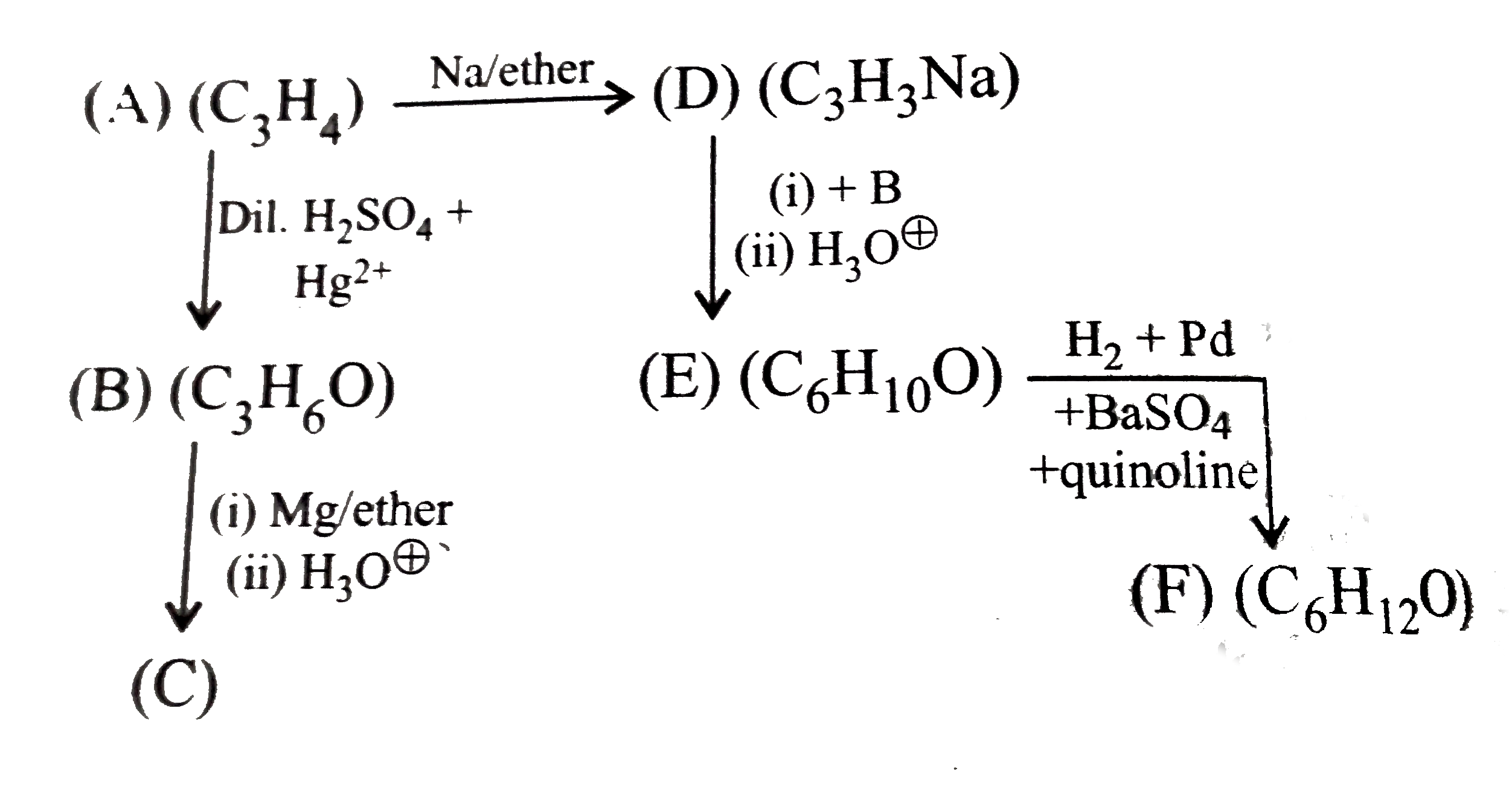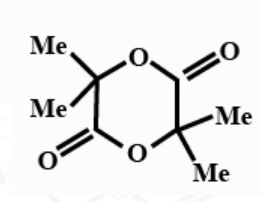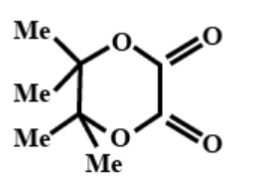An organic compound 'A'(C4H10O) is optically active. On mild oxidation, it gives a compound 'B'(C4H8O) but upon vigorous oxidation, it gives another compound 'C'(C3H6O2). The compound 'C' along with 'D' are also formed from 'B' by reacting with iodine in the presence of alkali. Deduce the structures of 'A','B','C' and 'D'.
The data suggests that the compound 'A' (C4H10O) is an alcohol. Since it is optically active in nature, it is a secondary alcohol. The alcohol upon mild oxidation gives ketone 'B'(C4H8O). The compound 'A' on vigouus oxidation forms an acid 'C'(C3H6O2). The acid 'C' and a compoun D (iodoform) are formed are when 'B' is reacted with iodine and alkali (NaOH). The sequenc of reactions is given ahead:

Topper's Solved these Questions
- BOOK - DINESH PUBLICATIONCHAPTER - ALDEHYDES AND KETONES EXERCISE - Additional Important Question35videos
ALDEHYDES AND KETONES
- BOOK - DINESH PUBLICATIONCHAPTER - ALDEHYDES AND KETONES EXERCISE - Question From Board86videos
ALDEHYDES AND KETONES
- BOOK - DINESH PUBLICATIONCHAPTER - ALDEHYDES AND KETONES EXERCISE - Interger5videos
ALDEHYDES AND KETONES
- BOOK - DINESH PUBLICATIONCHAPTER - ALCOHOLS AND PHENOLSEXERCISE - Matrix9videos
ALCOHOLS AND PHENOLS
- BOOK - DINESH PUBLICATIONCHAPTER - ALKALI EARTH METALSEXERCISE - Unit test-125videos
ALKALI EARTH METALS
Similar Questions
An organic compound A (C4H10O) reacts with HI giving a compound B (C4H9I) which on reduction gives n-butane. Oxidation of compound A gives C (C4H8O) and then an acid D (C4H8O2) . Deduce the structure of A,B,C and D.
View SolutionAn organic compound A (molecular formula C3H6O) is resistant is oxidation but forms a compound B (C3H8O) on reduction. B. reacts with HBr to form a bromide C which o treatment with alcoholic KOH forms an alkene D (C3H6). Deduce the structures of A,B,C and D.
View Solution
Knowledge Check
- Question 1 - Select One
The compound X(C3H6O) on oxidation gives a compound Y(C3H6O2) . The compound Y is
Apropanoic acidBbutyric acidCacetic acidDpropenoic acid - Question 2 - Select One

The compound F(C6H12O) on oxidative ozonolysis yirlds acetic acid and a compound (G) (C4H8O3). The new compound (G) on heating gives:A BMe−CH=C=CH−EtC
BMe−CH=C=CH−EtC D
D
- Question 3 - Select One
An organic compound (A), C2H5NO2 gives on reduction another compound (B) C2H7N. The reaction of nitrous acid on (B) evolves nitrogen and gives another compound (C) C2H6O. The compound (C) on oxidation gives acetic acid. The compounds A, B, C are
ANitroethane, Ethylamine, Ethyl alcoholBNitroethane, Dimethylamine, Ethyl alcoholCNitroethane, Dimethylamine, AcetoneDNone
An organic compound 'A' (C3H6O) is resistant to oxidation but forms compound 'B' (C3H8O) on reduction. 'B' reacts with HBr to form the compound 'C' .'C' with Mg forms Grignard's reagent 'D' which reacts with 'A' to form a product which on hydrolysis gives 'E'. Identify 'A' to 'E'.
View SolutionAn organic compound (A) (C8H14O) forms an oxime and gives a positive haloform reaction. On ozonolysis, it gives acetone and a compound (B) (C5H8O2) . (B) forms a dioxime and on subjecting to oxidation reaction gives an acid (C ) (C4H6O4). On treatment with excess of ammonia and strong heating, (C ) gives a neutral compound (D) (C4H5O2N). (D) on distillation with zinc dust forms pyrrloe. Suggest the possible structures of (A), (B), (C ), and (D). Explain the chemical reactions involved.
View SolutionAn organic compound (A) , C4H8Cl2 on hydrolysis forms another compound (B) , C4H8O.
If the compound (B) responds positively to iodo form test , then identify (A) and (B).View SolutionCompound (A) C8H6O2 on treatment with aq. NaOH followed by acidification gives (B) C8H8O3 which on oxidation gives benzoice acid only :
View SolutionAn optical active alcohol of formula C4H10O on oxidation given which of the following compound?
View Solution

